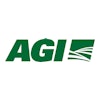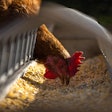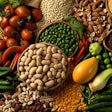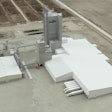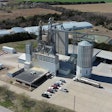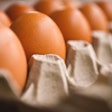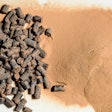
A new collaborative research project is surveying feed samples from mills across the country to find out how much and what type of salmonella may exist in animal feed.
The Institute for Feed Education and Research (IFEEDER) and several partners have launched the year-long study to analyze feed for any of eight salmonella strains that are shown to be harmful to livestock.
Preston Buff, Ph.D., director of regulatory affairs for the American Feed Industry Association (AFIA), said that this study would promote health and food safety for livestock.
“The outcome would be a tool to use communicating with customers or that helps mills develop a strategy around mitigation steps that may be needed, making sure we’re producing feed in the safest manner possible.”
Study methods and timeline
The project is a double-blinded study, which means the feed mills and sample providers won’t know any results, and researchers from the University of Arkansas who are examining the samples won’t know where the samples originated. Kansas State also will prepare sampling kits and a video to detail how to do aseptic sampling. Samples for the study will be collected in two seasons, roughly six months apart.
“Some data support the prevalence of salmonella within feed with some seasonal change,” Buff said. “Doing it in two different seasons helps pick up any variation within that.”
The samples will be tested for the presence of salmonella first. If a sample does contain the microorganism, it will be further evaluated to identify the specific salmonella strain, known as a serotype. There are more than 2,500 serotypes, and the majority are neither pathogenic to humans nor animals. This study focuses on strains that are pathogenic to animals.
Buff expected results to be announced at the end of 2018.
Effects of salmonella in feed
Salmonellae are microorganisms that exist naturally in the environment. The microorganisms also can be found in many animals.
However, there are only eight serotypes that the Food and Drug Administration considers to be a threat to food producing animals, such as poultry, swine, sheep, horses, and dairy and beef cattle. These species react to various types of salmonella in several ways.
For example, salmonella can lead to abortion in sheep and horses, with digestive disease or gastrointestinal issues occurring in other livestock.
Most scientists believe salmonella strains found in animal feed do not carry through animals to humans, but some food for animals is riskier than others to people. If people, especially children or immune-compromised individuals, directly handle animal food (such as a pet’s food) that contains salmonella there, is a high risk that they could contract salmonellosis, which leads to nausea, fever and headache, among other symptoms.
Because of this risk, the Food and Drug Administration differentiates between pet food and animal feed in its regulation of Salmonella found in food for animals.
Differences between pet food and animal feed
The Food and Drug Administration provides guidance for agency staff under “Compliance Policy Guide Sec. 680.800 salmonella in Food for Animals.” The guidance was issued July 12, 2013 and made changes from previous policies that stated that feed with any type of salmonella was contaminated. The policy considers variability in how Salmonella affects humans and animals, as well as the risk of people being exposed to the food.
In the case of pet foods contaminated with salmonella, no matter what serotype, FDA states that “regulatory action is warranted.” The likelihood that people will directly contact the pet food leads to a higher risk that they will contract salmonella, leading to significant health problems.
According to the policy guide, pet food includes “dog and cat food, aquarium fish food ... pet treats or chews, vitamins, minerals, and other nutritional supplements intended for dogs, cats and other pets, and pet food ingredients, such as animal products, plant protein products, grain products, vitamin and mineral products.”
“Pets can handle most types and not have issues,” Buff said. “There are mostly problems with humans handling it and getting sick.”
The agency uses a different approach for animal feed.
“FDA认为人类直接帐目的可能性ct with animal feed is substantially lower than for pet foods,” the directive states. “Therefore, in cases of animal feed contaminated with salmonella, FDA believes regulatory action is warranted when such cases involve salmonella serotypes that are known to cause disease in the animal species for which the feed is intended. Cases of contamination involving other salmonella serotypes should be considered on a case-by-case basis.”
If a hazard is found to occur in animal feed, the feed would need to be reported to the FDA as a “reportable food,” and the manufacturer would need to determine if a recall were needed. Buff noted that the industry has not seen any recent livestock feed recalls for salmonella.
“If someone decided that they want to understand why pet food is regulated one way and livestock another, we’ve got data to show that this is not an issue,” Buff said.
他指出,宠物食品公司额外的control methods, equipment and tests for all types of salmonella because of the risk that humans can come into contact with the microorganism. However, if the same requirements were in place for animal feed, the industry could lose millions of dollars in additional controls and processes with no scientific evidence that using these same measures and mitigating for all types of salmonellae rather than just the eight serotypes being examined in the study would benefit animal or human health. Animals are less susceptible to bacteria in their food than humans.
Buff stated that there had been work done in the past, finding that the salmonella numbers in feed were relatively low. This current research project builds on the previous research to determine exactly what the numbers and serotypes in feed are so that the feed industry knows what further control steps, if any, should be taken.
Projected practical application
Steven Ricke, University of Arkansas Donald “Buddy” Wray Chair in Food Safety and principal project investigator, said that the study will show what factors may be affecting salmonella prevalence and if there is anything common in the group.
“It’s important to know how much of a contribution, if any, the feed might be making to incidences of salmonella,” Ricke said. “We don’t know enough about feed to know if it’s a consistent, frequent, or a contributor at all. We don’t have good baseline data. The results may help the design of interventions if we need them forfeed manufacturing in general.”
Buff said the results of the research project would help AFIA members and members of the feed industry send a message about feed safety. They also would gain a better understanding of what is needed to communicate that message.
“The outcome of the study will improve our understanding about what the prevalence of salmonella in feed is and will be helpful in shaping future policies in feed safety,” Buff said.
Partners working together
Along with AFIA and the University of Arkansas, partners in the project are National Pork Board, National Renderers Association, Poultry Protein and Fat Council, U.S. Poultry and Egg Association, and U.S. Soybean Board. The partners are members of the Salmonella in Feed Coalition, which provided a $50,000 grant to the University of Arkansas to conduct the research.
Getting involved
The study is open to feed firms interested in participating by providing samples. Samples are needed from mills that produce bulk feed, not bagged feed, for food producing animals. Any livestock food producing feed mill personnel interested in participating in the study can contact AFIA’s Kori Chung, legislative and regulatory administrative assistant, atkchung@afia.org.
Ricke will be speaking about the project at the 2018 International Production and Processing Expo held in Atlanta. His presentation, “Salmonella and Its Association with Animal Food,” will be given from 11 to 11:45 a.m. on Jan. 31 in Room B 304-305 in the Georgia World Congress Center. His presentation will cover the study’s rationale, methods, relevancy and objectives.


